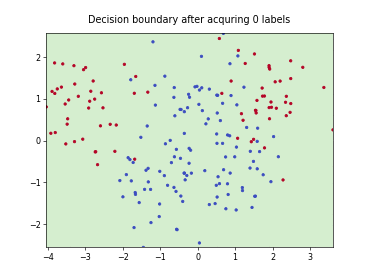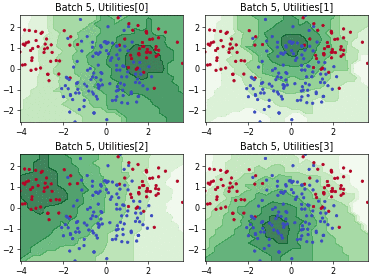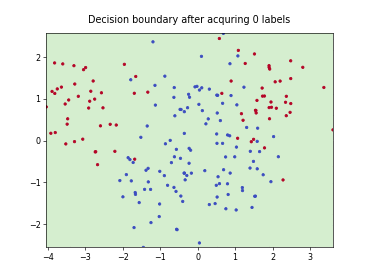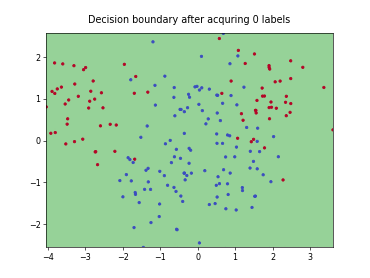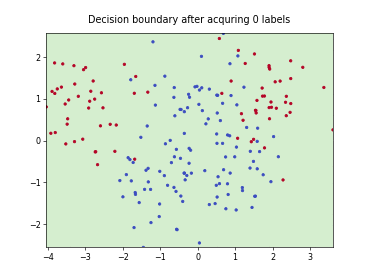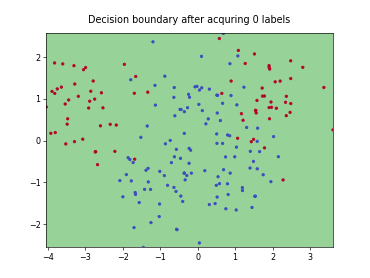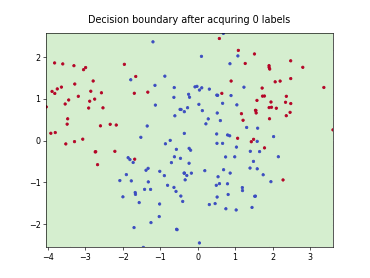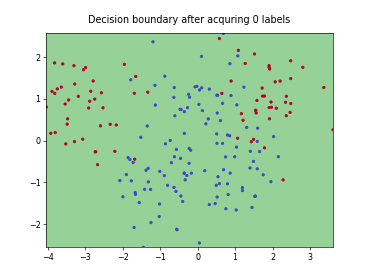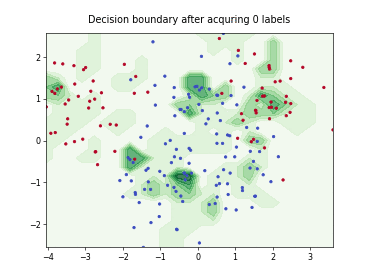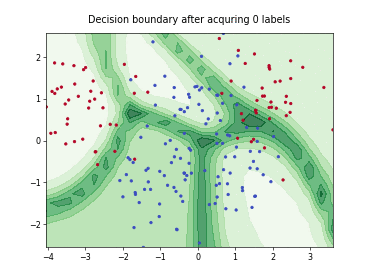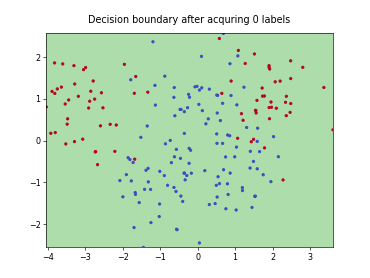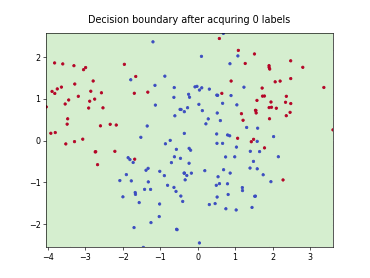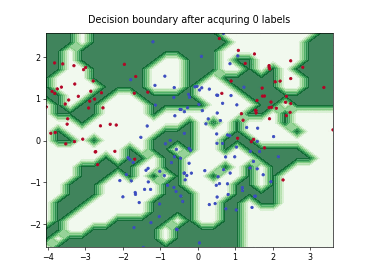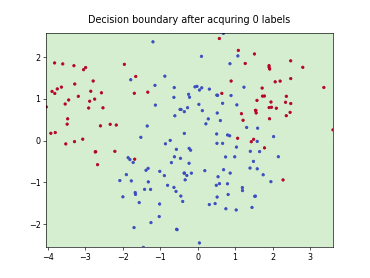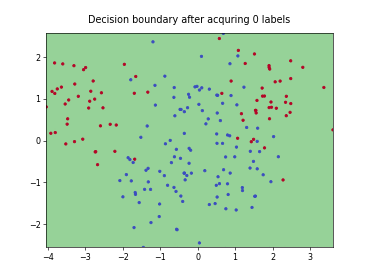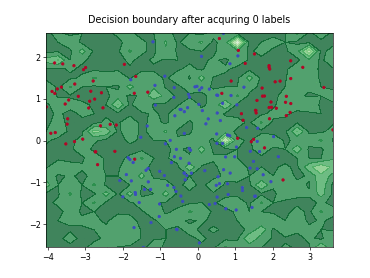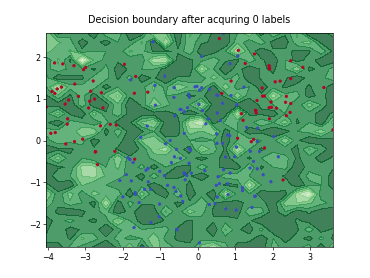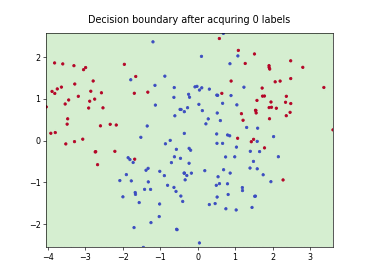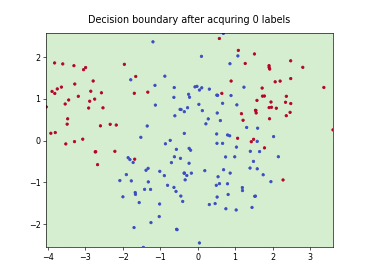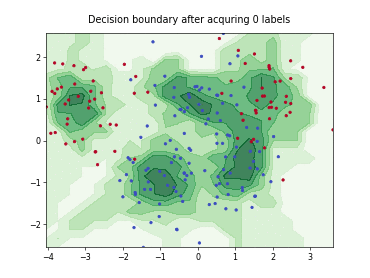skactiveml.visualization.plot_decision_boundary#
- skactiveml.visualization.plot_decision_boundary(clf, feature_bound, ax=None, res=21, boundary_dict=None, confidence=0.75, cmap='coolwarm', confidence_dict=None)[source]#
Plot the decision boundary of the given classifier.
- Parameters
- clf: Sklearn classifier
The fitted classifier whose decision boundary is plotted. If confidence is not None, the classifier must implement the predict_proba function.
- feature_bound: array-like, [[xmin, ymin], [xmax, ymax]]
Determines the area in which the boundary is plotted.
- ax: matplotlib.axes.Axes or List, optional (default=None)
The axis on which the decision boundary is plotted. If ax is a List, each entry has to be an matplotlib.axes.Axes.
- res: int, optional (default=21)
The resolution of the plot.
- boundary_dict: dict, optional (default=None)
Additional parameters for the boundary contour.
- confidence: scalar | None, optional (default=0.75)
The confidence interval plotted with dashed lines. It is not plotted if confidence is None. Must be in the open interval (0.5, 1). The value stands for the ratio best class / second best class.
- cmap: str | matplotlib.colors.Colormap, optional (default=’coolwarm_r’)
The colormap for the confidence levels.
- confidence_dict: dict, optional (default=None)
Additional parameters for the confidence contour. Must not contain a colormap because cmap is used.
- Returns
- ax: matplotlib.axes.Axes or List
The axis on which the boundary was plotted or the list of axis if ax was a list.
Examples using skactiveml.visualization.plot_decision_boundary#

Batch Active Learning by Diverse Gradient Embedding (BADGE)
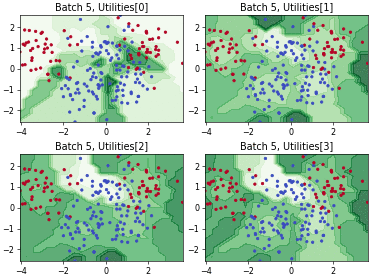
Batch Density-Diversity-Distribution-Distance Sampling
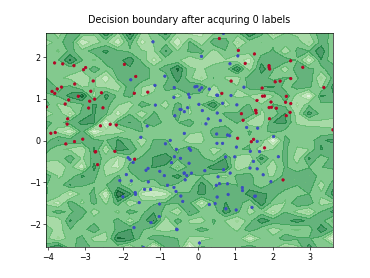
Query-by-Committee (QBC) with Kullback-Leibler Divergence
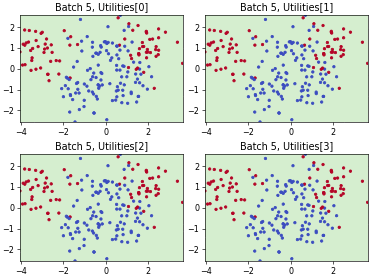
Batch Bayesian Active Learning by Disagreement (BatchBALD)
